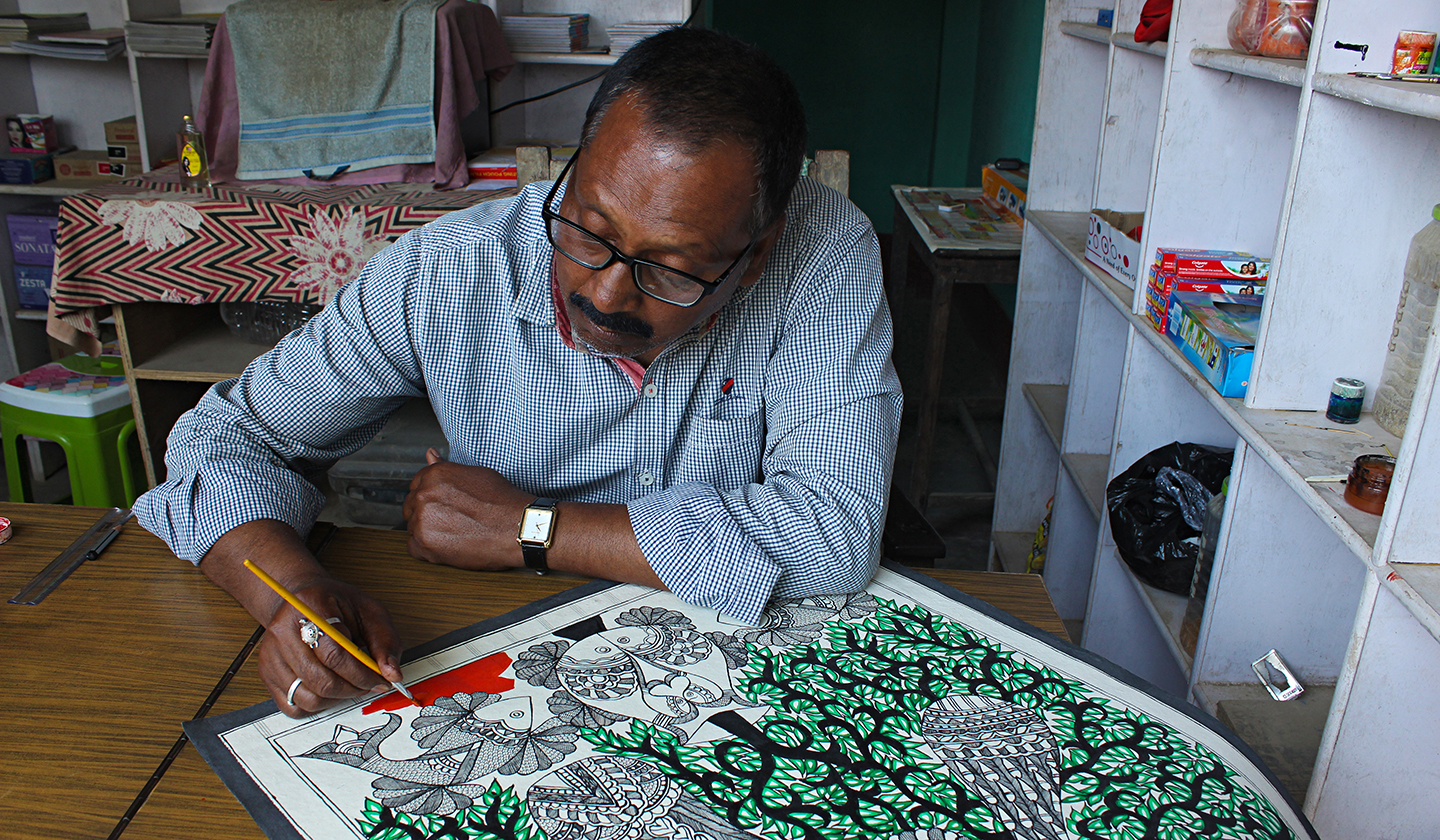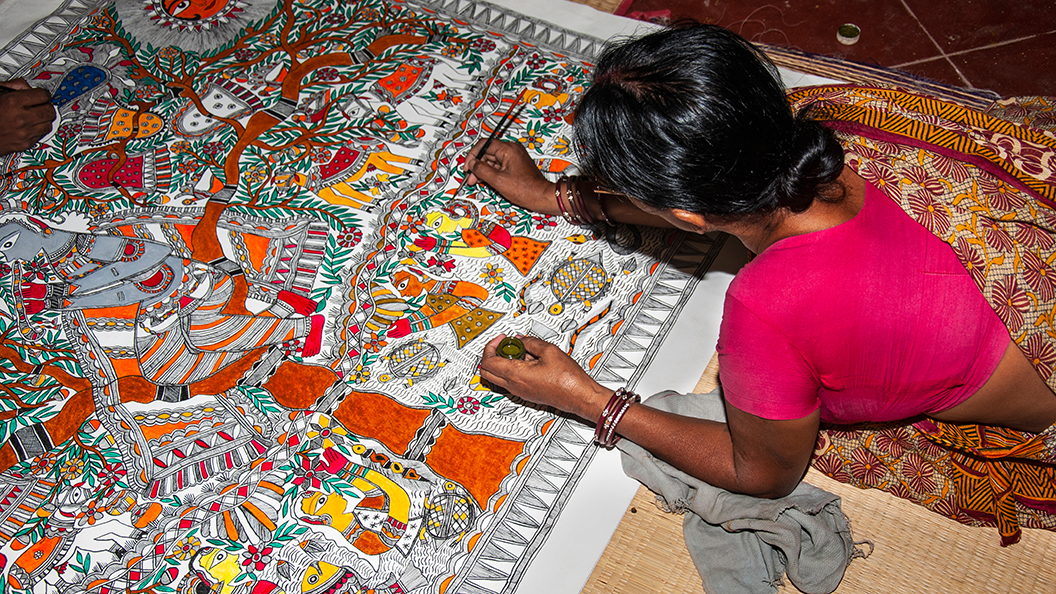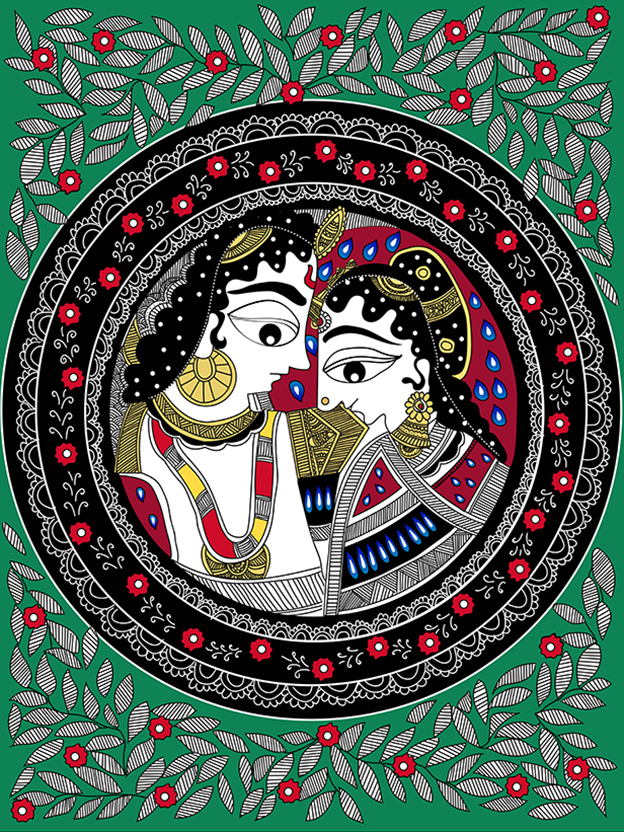THE CRAFT
Madhubani Painting

From the state of Bihar

Bihar
Madhubani painting is an ancient art form that originated in the kingdom of Mithila, in present-day Bihar. The legends say King Janaka, mentioned in the mythological text, Ramayana, commissioned these paintings. They were meant to commemorate his daughter Sita’s wedding to Lord Rama.

Heritage Value
Originally a form of bhitti chitra, or wall art, Madhubani paintings adorned the walls of homes. They are characterised by their vibrant hues and unique motifs. These artworks are categorised into five distinct styles, bharni, katchni, tantrik, godna, and kohbar, associated with specific rituals and communities. However, they all share a common theme of symbolising life, fertility and prosperity.
Madhubani art remains an integral part of rituals, weddings and festivals in Bihar. In 1966, this age-old art form experienced a revival. Both non-profit platforms as well as government units encouraged women to paint on paper (instead of fabric). This was meant to help combat the impact of a severe drought on their livelihood.
Over time, Madhubani art embraced canvas, paper and textiles. The technique found widespread acclaim nationally and globally. Artists use handmade paper for portraying mythical figures, aquatic elements, flora and fauna. First, they create outlines with nib pens. Colours are applied with brushes, twigs, matchsticks and even fingers. The vibrant hues come from natural ingredients, like soot, turmeric, rice powder, leaves, and indigo, as well as kusum and tesu flowers.
Madhubani technique was certified with the Geographical Indication (GI) tag in 2005.
Madhubani art remains an integral part of rituals, weddings and festivals in Bihar. In 1966, this age-old art form experienced a revival. Both non-profit platforms as well as government units encouraged women to paint on paper (instead of fabric). This was meant to help combat the impact of a severe drought on their livelihood.
Over time, Madhubani art embraced canvas, paper and textiles. The technique found widespread acclaim nationally and globally. Artists use handmade paper for portraying mythical figures, aquatic elements, flora and fauna. First, they create outlines with nib pens. Colours are applied with brushes, twigs, matchsticks and even fingers. The vibrant hues come from natural ingredients, like soot, turmeric, rice powder, leaves, and indigo, as well as kusum and tesu flowers.
Madhubani technique was certified with the Geographical Indication (GI) tag in 2005.

Memory Vault
In 2015, during his visit to Germany, Prime Minister Shri Narendra Modi presented a Madhubani painting to the Mayor of Hannover, Steven Schostok. This was by none other than National Award-winning artist Baua Devi. In 2021, Dulari Devi, a Madhubani artist, was awarded the Padma Shri. She gifted an artwork to Prime Minister Modi, that interpreted marine life and its relationship with the women of Bihar.
Disclaimer:
Any information on this page is anecdotal and based on publicly
available details. If you're interested in learning more,
click here.

